Landlocked Japanese prefecture creates a new kind of fish, so how does it taste as sashimi?
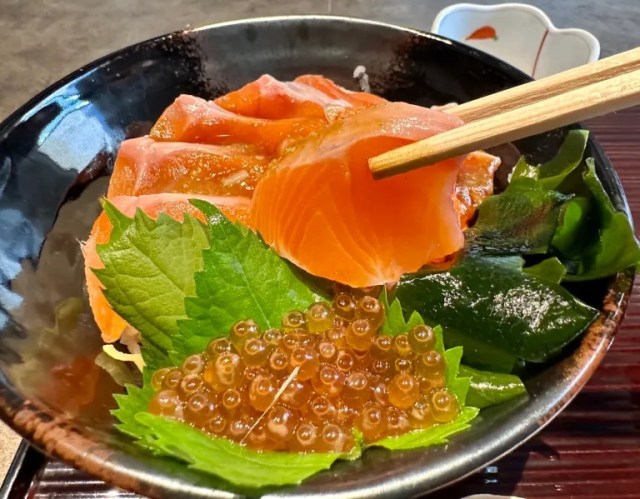
That might look like salmon, but it’s actually Fujinosuke.
We recently took a ride on Yamanashi Prefecture’s Fujisan View Express, one of the coolest sightseeing trains in Japan. With a sleek and stylish exterior, retro-chic interior, and, most importantly, amazing views of Mt. Fuji as you travel down the tracks, the Fujisan View Express is well worth riding all the way from Kawaguchiko, the first stop on the Fujikyuko Line, all the way to Otsuki Station at the other end.
Our day trip ran into just one snag, though. The Fujisan View Express doesn’t run as frequently as the regular trains do, so when we arrived at Otsuki Station to start our trip back towards Tokyo, we found out that we had an hour to wait until the next Fujisan View Express would be departing. This turned out to be a blessing in disguise, though. Give us an hour of time to kill, and our instinctual reaction is “OK, may as well go get something to eat,” and that line of thinking led us to an opportunity to try a special local kind of sashimi that we’d never eaten before.
Now, if you know much about Japanese geography, you might be raising your eyebrows at the idea of Yamanashi having its own representative sashimi, since it’s one of the few landlocked prefectures in Japan. But after we sauntered into the restaurant Hamanoya, located across the street from Otsuki Station, and opened their menu, we saw that they were offering a kind of fish called Fujinosuke.
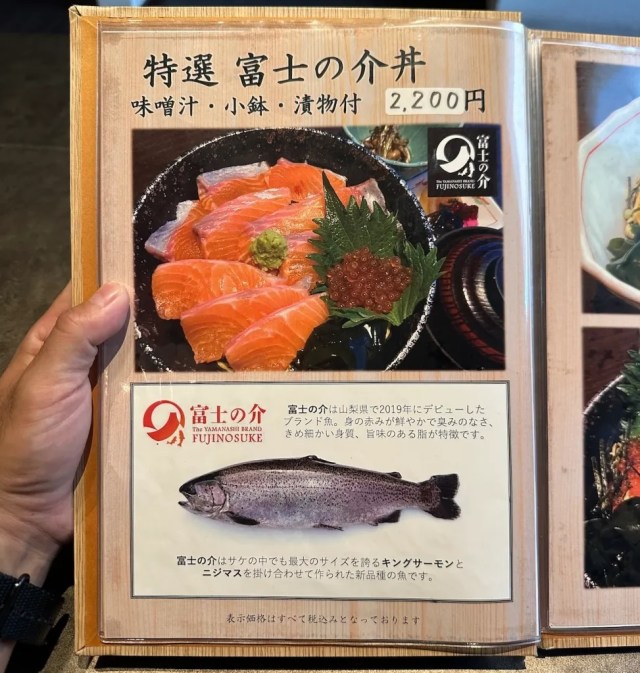
▼ Hamanoya is the building on the left
So what is Fujinosuke? It’s a cross between king salmon (which is called masunosuke in Japanese) and rainbow trout, first bred by the Yamanashi Prefecture Fisheries Center in 2019 and now aquaculture-raised.
As a new, and regional, fish, Fujinosuke isn’t easy to find. We weren’t going to let this opportunity pass us up, so even though Hananoya’s 2,200-yen (US14.70) Fujinosuke Bowl set is more than we usually spend for lunch, we ordered one to see what this mysterious fish tastes like.
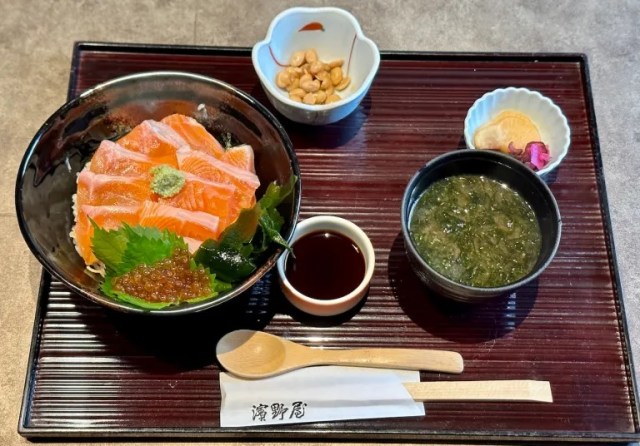
We felt better about that price point when our server placed our lunch in front of us, though. Fujinosuke is beautiful, with a vivid orange color and an enticingly glossy shine.

Accompanying the fish and rice in the bowl is a leaf of shiso, an aromatic herb sometimes referred to as “Japanese basil,” and what at first glance might look like ikura/salmon roe. Actually, though, these are masuko, or salmon eggs.
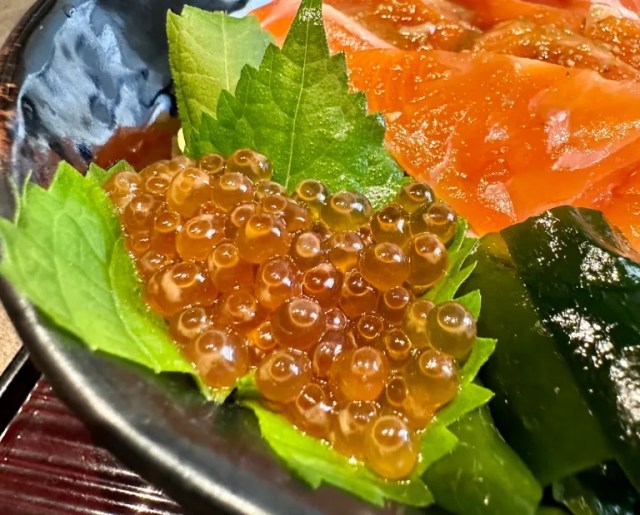
With such a gorgeous appearance, we now had high hopes for the Fujinosuke’s flavor, so imagine our joy when it turned out to taste even better than it looked! The fish has a smooth surface and a texture that gives way from firm to just chewy enough as you bite into it, and it has the optimal amount of fat to give it a rich flavor without being oily. Meanwhile, the masuko are smaller in size than ikura, but surprisingly filling, with a clean finish.
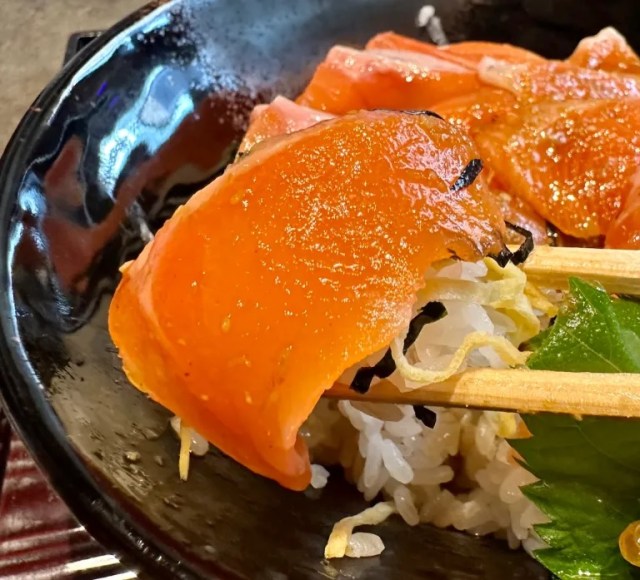
In fact, the Fujinosuke was so good that we actually wound up feeling grateful for the hour wait we had for our train. Had it been shorter, we might have been tempted to just grab some snacks from a kiosk or convenience store, and almost certainly wouldn’t have gone looking for sashimi in the mountains. So while the world-famous punctuality of Japanese trains usually means it’s a waste of travel time to get to the station very far ahead of time, if you’re passing through Otsuki, we recommend getting to the station an hour before your train leaves so that you can try the Fujinosuke too.
Restaurant information
Hamanoya / 濱野屋
Address: Yamanashi-ken, Ostuki-shi, Otsuki 1-3-3
Open 11 a.m.-9 p.m.
Website
Photos ©SoraNews24
● Want to hear about SoraNews24’s latest articles as soon as they’re published? Follow us on Facebook and Twitter!
Credit:

0 comments: